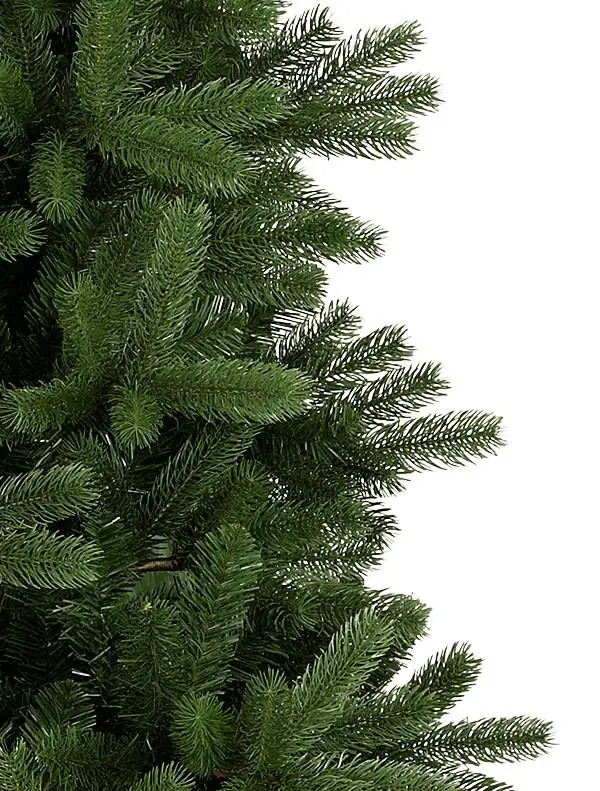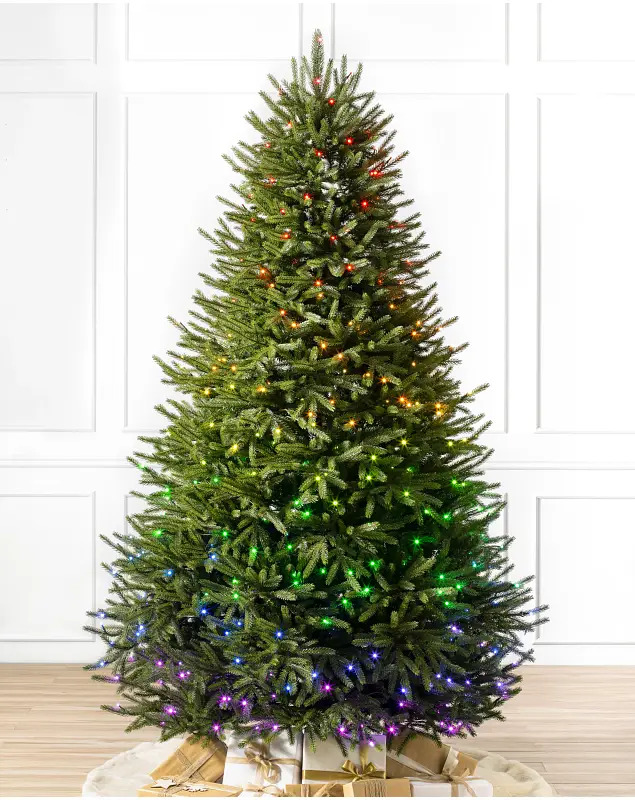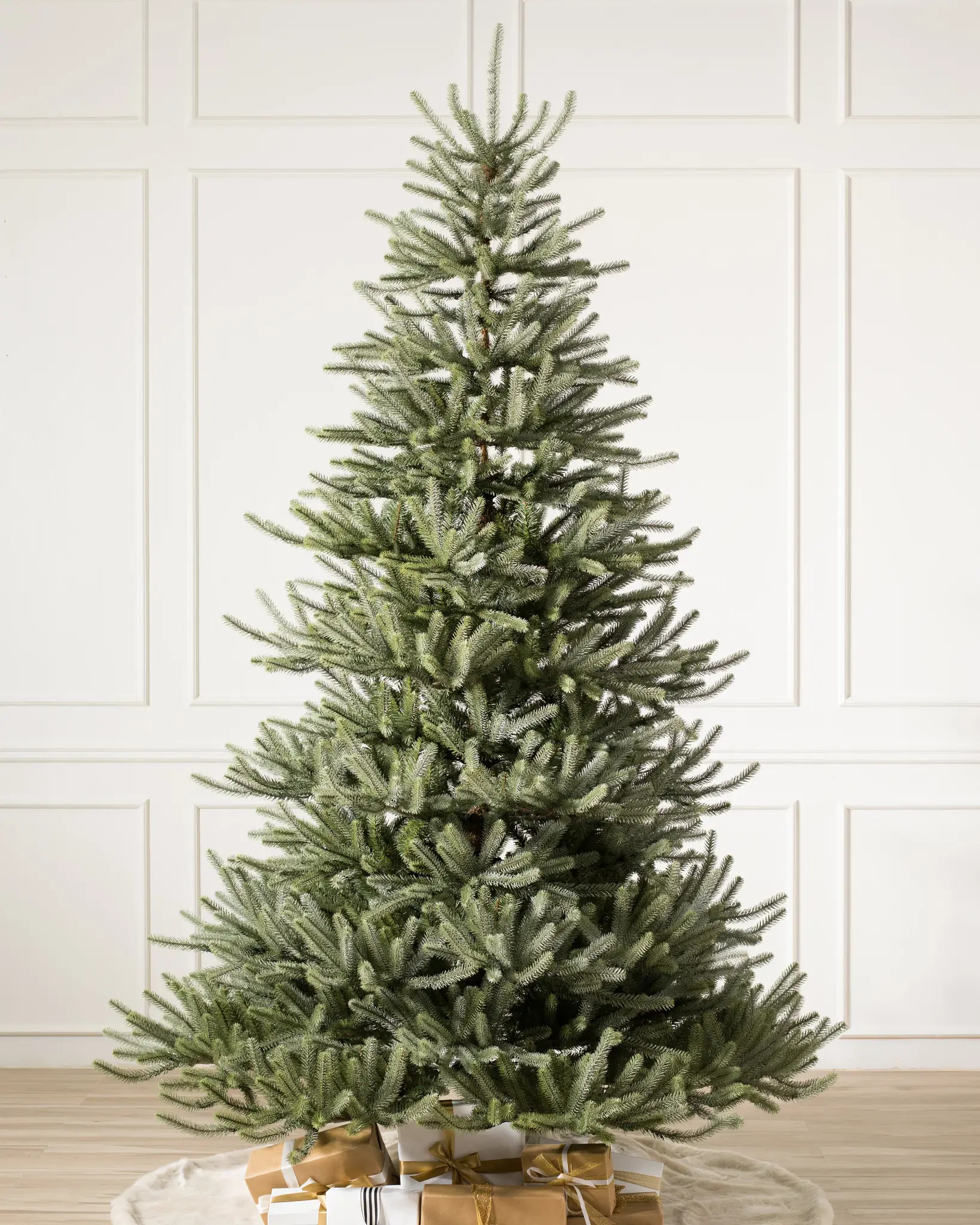Woodland Spruce™
$1,099.00 – $2,199.00
Woodland Tree for sale
Beauty in simplicity is what our Balsam Hill® Woodland Tree is all about. Featuring a lush blend of lifelike True Needle® and Classic Needle foliage, this narrow Christmas tree brings the elegance of nature into your home. A statuesque silhouette and a dark green color make this tree a captivating focal point for your holiday decorating.
Details
- Crafted with abundant True Needle® foliage for realism that draws the eye and Classic Needles for added fullness
- Easy Plug® system incorporates light connections in the trunk, so lighting your tree is as simple as plugging it into a socket.
Characteristics of the Woodland Spruce Tree
The woodland spruce tree is known for its impressive height, often reaching up to 80 feet or more. Its trunk is straight and cylindrical, covered in thick, scaly bark that ranges in color from gray to reddish-brown. The branches of the woodland spruce tree grow horizontally, forming a dense, pyramidal crown. The leaves, or needles, are evergreen and arranged spirally along the branches. These needles are sharp and stiff, measuring around 0.5 to 1 inch in length. They have a bluish-green hue, which gives the tree its scientific name “glauca,” meaning “blue” in Latin. One of the distinguishing features of the woodland spruce tree is its cones. These cones are pendulous and hang downward from the branches. They start off green and eventually turn brown as they mature. The cones contain seeds that are an important food source for various wildlife species.
Habitat and Distribution
The woodland spruce tree is native to North America and can be found across a wide range of habitats. It is particularly prevalent in the boreal forests of Canada and Alaska, where it thrives in cold climates with short growing seasons. The tree is well-adapted to withstand harsh winters and can tolerate extreme temperatures as low as -50 degrees Fahrenheit. In addition to its presence in boreal forests, the woodland spruce tree can also be found in other forest types, such as mixed coniferous forests and subalpine forests. It prefers moist, well-drained soils and is often found growing near rivers, lakes, or wetlands.
Ecological Importance
The woodland spruce tree plays a vital role in the ecosystems it inhabits. Its dense crown provides excellent cover and nesting sites for a variety of bird species, including owls, woodpeckers, and warblers. These birds rely on the tree’s branches and needles for protection from predators and adverse weather conditions. Furthermore, the woodland spruce tree offers important food sources for wildlife. The cones, rich in seeds, are consumed by small mammals like squirrels and chipmunks. Moose and deer also browse on the twigs and needles of the tree, especially during the winter months when other food options are scarce. The woodland spruce tree contributes to the overall health of forest ecosystems by acting as a carbon sink. Through photosynthesis, it absorbs carbon dioxide from the atmosphere and stores carbon in its woody tissues. This helps mitigate climate change by reducing greenhouse gas levels.
Human Uses
The woodland spruce tree has been utilized by humans for various purposes throughout history. Its wood is highly valued for its strength and durability, making it a popular choice for construction, furniture, and paper production. The straight trunks of mature trees are particularly sought after for lumber. In addition to its timber value, the woodland spruce tree has cultural significance for indigenous communities. It has been used in traditional ceremonies, crafts, and medicinal remedies. The resin obtained from the tree has been used for sealing canoes and as an adhesive in various applications.











































Reviews
There are no reviews yet.